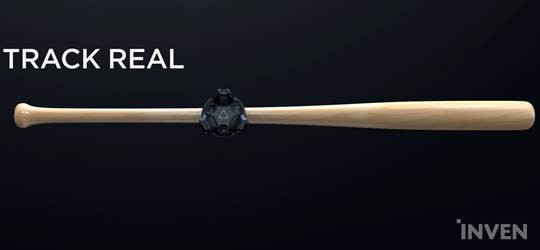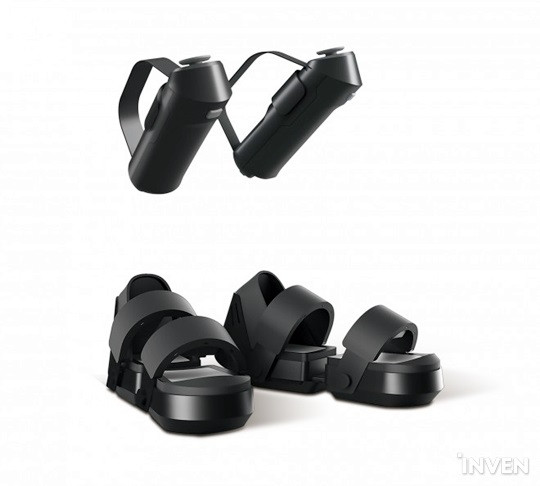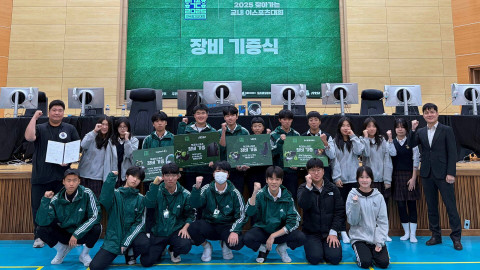
As usual, this year’s CES was a sight to behold, where one can get a sneak peek at what’s ahead in the consumer technology industry. Having said that, CES has always been a fashion show of sorts for technology, and it will take some time before mainstream audiences get a chance to really experience what was showcased. Regardless, getting a sneak peek at the new technology is a marvel in and of itself.

VR making an appearance was a given, since it’s looking to be the innovation that will revolutionize the world. Although it would be far-fetched to say that VR took the center stage in this year’s convention, CES 2017 was more jam-packed with VR than anything else.
In case you missed it, here’s the recap of anything major and interesting related to VR that was revealed at the event.
Intel’s Project Alloy: Catching two birds called VR and AR
When talking about the IT industry with focus around computers, Intel is like a world tree, as evidenced by the PC market often being dominated by Win-tel(Microsoft+Intel). Although Intel hasn’t been showing off any flashy or eye-catching devices, Intel’s CPU is still at the heart of everyone’s computers. It’s not an exaggeration to say that MS and Intel make up the foundation of the PC market (there’s another giant by the name of IBM, but they have been out of the PC market for a while).

As a departure from their previous endeavors, Intel announced the Alloy Head-Mounted Device(HMD) which works with both VR and AR. Alloy’s main feature is Merged Reality(MR), which combines the best of VR and AR. In the past, VR has had trouble with physical surroundings, whereas AR breaks immersion by extensively relying on the real world. MR solves the issue by scanning real-life objects and projecting them in the virtual space. In other words, the user is fully aware of the surroundings and can freely move around without the fear of running into anything.

Additionally, previously released HMDs have had to deal with the physical limitation of wires. Alloy, however, works wirelessly and is compatible with the MS VR platform. Although it’s difficult to gauge the real application of a device that’s still in development, Alloy’s announcement alone will put most current HMDs to shame.
Vive Tracker and Deluxe Audio Strap: More than just accessories
Widely available and extremely popular, the HTC Vive also revealed new accessories called the Deluxe Audio Strap and Tracker. The former is specifically tuned with Vive to play sound and voice.
While Oculus had built-in speakers in the headset and therefore had no need for an external audio system, Vive did not have native audio in the device. To hear sound, the user must deal with more weight and pesky cable management. Now, with the Audio Strap, there is no such hassle, because it comfortably accommodates different head sizes with an adjustable strap.
The Vive Tracker attaches to physical objects and allows said objects to be used in VR settings. For example, people can use the Tracker on a baseball bat or a tennis racket to play sports games. The possibilities are endless.

However, one lingering issue is the price. At the time of this writing, the new HTC Vive will set you back $800, which is close to the price of a competent PC. Not only that, but people will also have to have a high-end PC to capably use the Vive. If one were to build everything from scratch, it’ll cost at least $2,000 to $2,500 to play with the Vive.
Lenovo’s VR Headset: Light in both price and weight
World-renowned PC manufacturer, Lenovo, unveiled their own VR headset prototype. Last June, MS made its Holographic API public and partnered with hardware companies including Dell, Acer, and Asus. Among them, Lenovo was the first to showcase a finished product.
Lenovo’s headset prototype boasts a design that is both simple and lightweight. It looks slim and is lighter than other current VR headsets. The company aims to reduce the weight to 350g(about 0.7 lb), which is around 70% of the weight of current headsets on the market.

Don’t judge the device by its weight though, because Lenovo brought up the performance by equipping two 1440x1440 OLED panels for each eye, compared to the Oculus and Vive which both have 1080x1200 resolutions. The device uses inside-out, six degrees-of-freedom tracking, which can recognize the user’s location without a separate motion tracking device or camera. Just like Intel’s Alloy, Lenovo’s headset also supports MR by using an external camera.
One caveat is that everything that was shown is only a prototype. Needless to say, VR benefits immensely from high resolutions, but other companies went with lower resolutions to reduce the taxing impact it has on the processing power of a PC. It’s still a remarkable announcement, but it’s too early to believe that everything in the prototype will be in the final product.
Zotac VR GO Backpack: VR on the go
Zotac came out with something different: the portable VR computer named VR GO, equipped with an i7 processor and GTX 1070. One nifty feature is that carrying the device will eliminate the physical limitation of traditional VR. It’s intended to bring the computer to the user, as being wired is too cumbersome. It’s a little doubtful if it will have practical uses though.

Actually, not being able to see while wearing VR headset isn’t a huge issue these days because of the MR technology mentioned above and the front cameras that come with most modern headsets. The real issue with VR GO is its design and weight.
At the end of the day, the user is carrying a PC on their back. No matter how light the company claims that it is and even if the reporter who got to use the device at the event said that it wasn’t as heavy as he expected, users will still have to take on the burden of carrying the device. Nothing can be as light as not needing to carry anything. As the current trend is going towards making the device as light as possible, tacking on more weight seems to go against the flow.

Then there’s the heat. Even though there’s an insulating material where the PC meets the back, not much can be done about the warm air coming out of the ventilation holes. I wouldn’t be surprised if my back gets sweaty after about half an hour of play, since VR is known to be taxing on computers.
Still, the VR GO isn’t without its merits. Danny Wong, Director of Product Management, said that Zotac aims to compete performance-wise with their mini-ITX computers, which means that the company wants to reduce the weight and size without sacrificing performance. More convenient and powerful iterations will soon follow the VR GO, so the current version’s shortcomings are only temporary.
Cerevo Taclim: When seeing isn’t enough
Hardware manufacturer, Cerevo, showcased Taclim, which understandably caught much attention among the many booths at CES 2017. Consisting of gloves and shoes, these two pairs of the device work independently and fit the hands and feet of the user.

One of the most amazing features of Taclim is haptic feedback. For example, walking around in a dessert will recreate the feel of sand, while similar feedback is generated on grass and water. This feedback is stored as data, and developers can create their own unique feedback. Ultimately, any tactile feel is possible with Taclim.
The device features 9-axis sensors including acceleration, gyroscope, and geomagnetism, and can be connected wirelessly via Bluetooth or Sub-Ghz. Charging time is around three hours, and it can be used for two hours on a single charge. From a gaming perspective, Taclim may open the doors to VR fighting games. Of course, it won’t be easy to move with the device strapped on, but it’ll be an experience to see who’s the better fighter without resorting to actual violence (and possible lawsuit).

There are drawbacks, though. Taclim is an awesome device that comes with a matching price tag of around $1,000 and $1,300. Again, it’s the same as the price of a capable PC. Additionally, there may be certain weight limitations on the shoe part of the device. Despite everything, Taclim is too cool to ignore, as it seems like a step toward the actual VR that the public craves.
Sort by:
Comments :0







